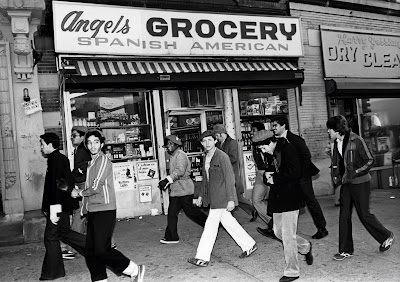In 1979, crime rates in New York were spiking. And if the
streets weren’t bad enough, the subway system had become a symbol of decay
hollowing the bowels of a bankrupt city.
People were angry, frustrated with an
impotent police force, the drugs, the indiscriminate muggings. That year, a few
of them decided to take matters into their own hands. Led by the 23-year-old
night manager of a Bronx McDonald’s named Curtis Sliwa, the Guardian Angels
began patrolling the city as unarmed crime stoppers. They wore a uniform—red
beret, red jacket, combat boots—and they employed a streetwise sensibility to
diffusing tensions, especially on the subway.
At first law enforcement was understandably uncomfortable
with the idea of self-styled vigilantes roaming the city. Mayor Koch called
them “paramilitaries,” and a 1981 tussle with undercover officers aboard the A
train landed eleven of the Angels in jail, but the papers ate it up. And the
public loved them.
Even then-Lieutenant Governor Mario Cuomo got onboard,
calling the Angels “the best society has to offer,” which in 1981 meant a lot
in reference to a group of mostly young black and Latino men from the inner
city.
Koch eventually came around, realizing that public support
was more important than complaints from his transit cops. The Angels were given
official police training and provided with free subway passes. At their height
they numbered between five and seven hundred strong.
Years later, the Brooklyn-born Sliwa would admit to
fabricating a number of his group’s crime-fighting exploits, but by then he was
a local celebrity and host of his own radio show on WABC-AM, and he’d always
had a flair for the performative, so it wasn’t much of a surprise, either, when
in 1992 he testified to having been targeted for assassination by the Gambino
crime family.








No comments:
Post a Comment